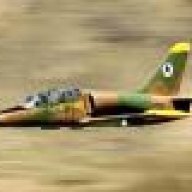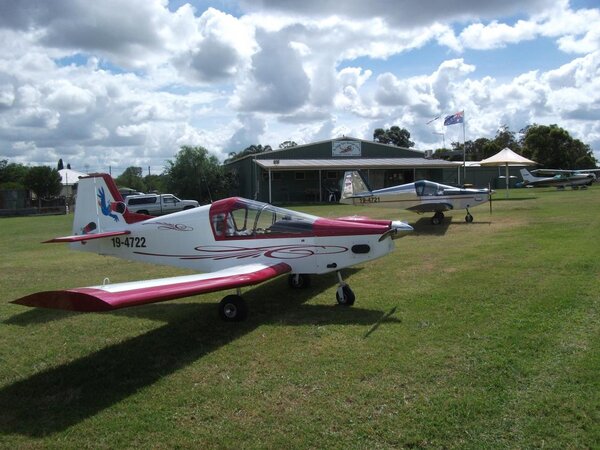-
Posts
29 -
Joined
-
Last visited
Turnerj's Achievements

Active member (2/3)
-
Some interesting opinions here, great stuff. It seems to me that most people are a lot more open to the thought of computer-controlled engines. Perhaps because it is nearly impossible to purchase a road vehicle these days without a computer controlled engine. So there is less of a fear of the unknown here. Price will not be what restricts this technology, if you had been told 15, 20 years ago that your mobile phone will by 2010 be able to find you on a map, check you emails, submit a flight plan, watch movies, browse the internet, control a remote control helicopter and play all sorts of mind-numbing games. What would you have estimated the cost to be? I think however, as Bandit12 said, Resistance to change will be what keeps this sort of technology away.
-
Hey everyone, I'm currently doing a case study for a uni course on Digital Fly-By-Wire (DFBW). Whilst researching I began wondering what the pilot's community view would be on the technology. Firstly a couple of facts for those who haven't a clue what I'm talking about: 1) In a DFBW aircraft, the stick/yoke (I'll use stick) is not connected to the controls directly, but rather acts as an input to a series of computers which take into account a range of parameters including (but not limited to) the airspeed, altitude and vertical acceleration (g's) and decides on an appropriate control surface position that would satisfy the pilot's request. 2) The stick now takes on a different role in the aircraft. When the stick is moved sideways, the computer interprets this as a request for a particular roll rate rather than a control surface position like in traditional mechanical/hydraulic control systems. The only exception is when the stick is centralised, this is interpreted as wings level and the computers will again solve complex differential equations to determine suitable control surface positions which will accomplish this. If you've ever watched any fast jet coming into land, you will have seen this illustrated. The elevators (which also act as ailerons) appear to 'twitch' as the plane is coming in to land. This is not because of the pilot, but rather a perfect example of the DFBW computers constantly chasing 'wings level' by adjusting control surfaces. All the while the pilot may be sitting there with the stick centralised. 3) As far as vertical (pitch) control goes, the stick is a 'g' setting, with centralised as obviously 1g and max aft position may be the maximum rated g for the airframe, or a little bit more. Depends on the aircraft. It should also be noted that this negates the need for elevator trim in the aircraft. Once a nose attitude is set and the stick centralised, it will maintain that position until the next input from the aircraft. 4) Power-By-Wire is also known as Full-Authority-Digital-Engine-Control (FADEC) this is where the throttle takes on the role of a power setting rather than a butterfly valve position. Mixture, Propeller setting and throttle setting are all computed by the computers to find the optimum settings for the requested power from the pilot. The first (and rightly so) concern most pilots will have is system reliability. Typically these DFBW systems are quadruplex systems, meaning that 4 independent computers all create the same data independently. If one computer creates erroneous data (due to any number of reasons) that disagrees with the other 3, then it is 'voted out' by the others and disregarded completely. The benefit of such systems are typically; reduced dry weight, ease of transition between similar types (using DFBW, it should be possible to make all the Tecnams, Jabirus etc 'feel' the same) and a reduction in pilot workload (due to the lack of need for things like trim inflight) Also, usually the computers used for FADEC are separate to DFBW, but I may be wrong about this. My main reason for asking is, with computers getting smaller and more powerful at an exponential rate, it is only a matter of time before this technology is possible in light aircraft. The Liberty XL-2 already has the world's first FADEC system in a light aircraft; the Embraer Phenom 100 (a 6 seat very-light-jet) has a some-what limited DFBW system as well as FADEC. It is coming. I can't wait to see how this technology is currently percieved by the pilot community. Cheers,
-

Companies that do Laser or Plasma cutting
Turnerj replied to old man emu's topic in Aircraft Building and Design Discussion
Laser Central in Brisbane. 07 3375 6022 http://www.lasercentral.com.au/ I can vouch for there quality. They do fantastic stuff, +/- 0.1 mm, can do cnc machining, laser etching, tubular laser cutting as well as metal folding. I'm part of a group at uni where we design and build a race car. Basically our entire car has been fabricated by them. -
Pause the original video at 3:50, nose up control input.
-

Do you support shutting down the RAA magazine?
Turnerj replied to fly_tornado's topic in AUS/NZ General Discussion
Where did you get $365 from? The magazine is fine, leave it alone -
They are, and they are precision approaches: Airservices Australia - Environment - The Brisbane Green Project This is what my school has been doing in Aerospace studies. Cheers,
-
Hi, The rules changed last month, (for Type 1 diabetes) you can now fly solo, after meeting certain strict criteria and having 15 flights with a 'safety' pilot with you. PM me if you like. Cheers, James
-
http://files.fsnordic.net/?download=2157 It's a free add on for FSX
-
Correct me if I am wrong, but don't they depend on the transponder being inside radar coverage to work? I thought that was why they were called 'Passive' collision avoidance.
-
I'll second that! I've tested the beta version aswell, everything about it is stunning and very realistic. :big_grin:
-
Finally, after 15 years of hard work by a few very commited individuals. Type 1 diabetics can now fly solo with a PPL in Australia. Aligning CASA regulations with the FAA and Transport Canada. This is great news for any pilots with type 1 diabetes (such as myself). Big thanks to those who worked hard to get this. Here's the link for more info. Civil Aviation Safety Authority - DAMEs and DAOs Cheers,
-
Hi Shags, FYI, there are lots of tecnams at Boonah, but no GA ones. Its all RA-Aus cheers, James
-
The first pic was taken literally hours before the crash, the second is from the courier mail. Hope she recovers soon. [ATTACH]10183.vB[/ATTACH] [ATTACH]10184.vB[/ATTACH]
-
Hi everyone, Slightly off topic, but how about audible alarms? Our pool filter has a pressure guage on it which starts beeping quite loudly when the pressure goes over a certain value. The guage has a switch in the face with three positions. Off, on and test the switch springs back to on when in test position. from what i can tell the tip of the needle is magnetic and on the other side there is another magnet which follows the needle tip. When the guage reaches the limit the other magnet comes into contact with a piece of metal (highly technical term), completing the circuit. Perhaps this system could be used say for example on the oil pressure guage? I can't see why not, the all up extra weight is that of a 9V battery! cheers, James
-
Sorry, forgot the link OZx Forum -> Download Manager -> Anthony Lynch Scenery -> Ants Aussie Airports Boonah BTW, its free!



